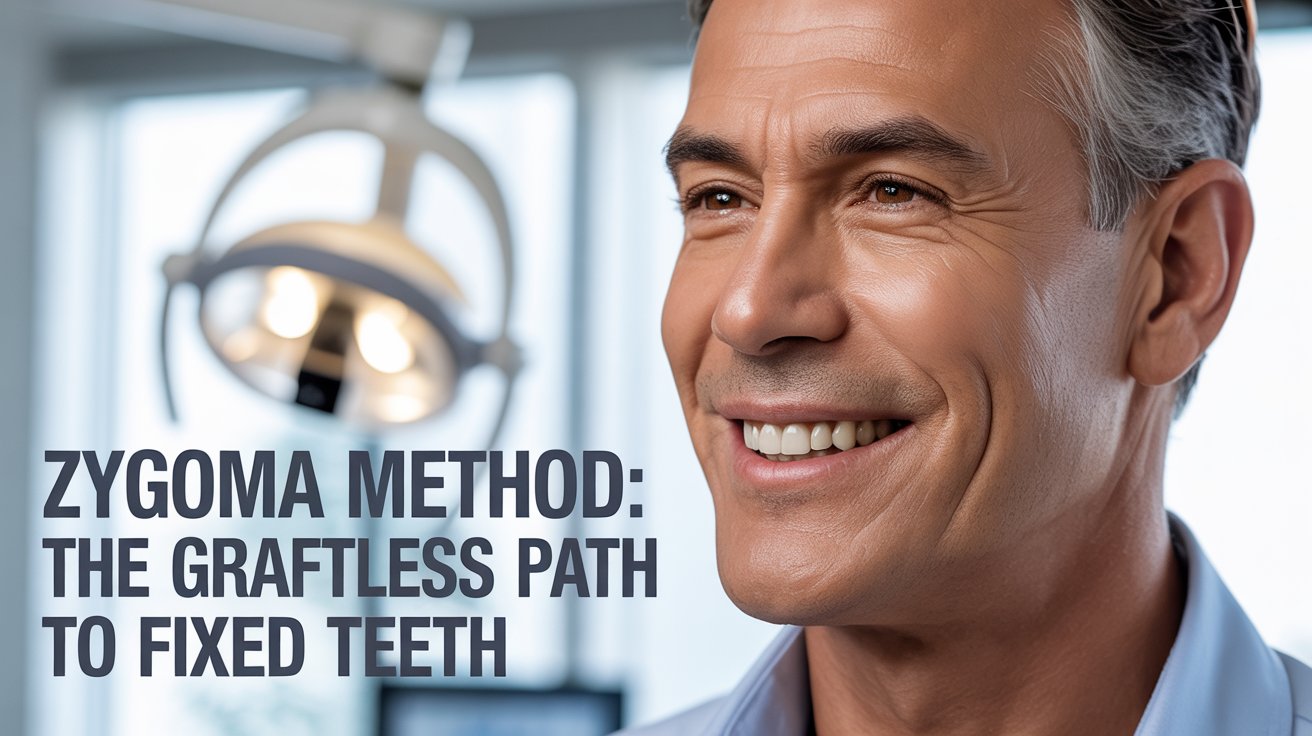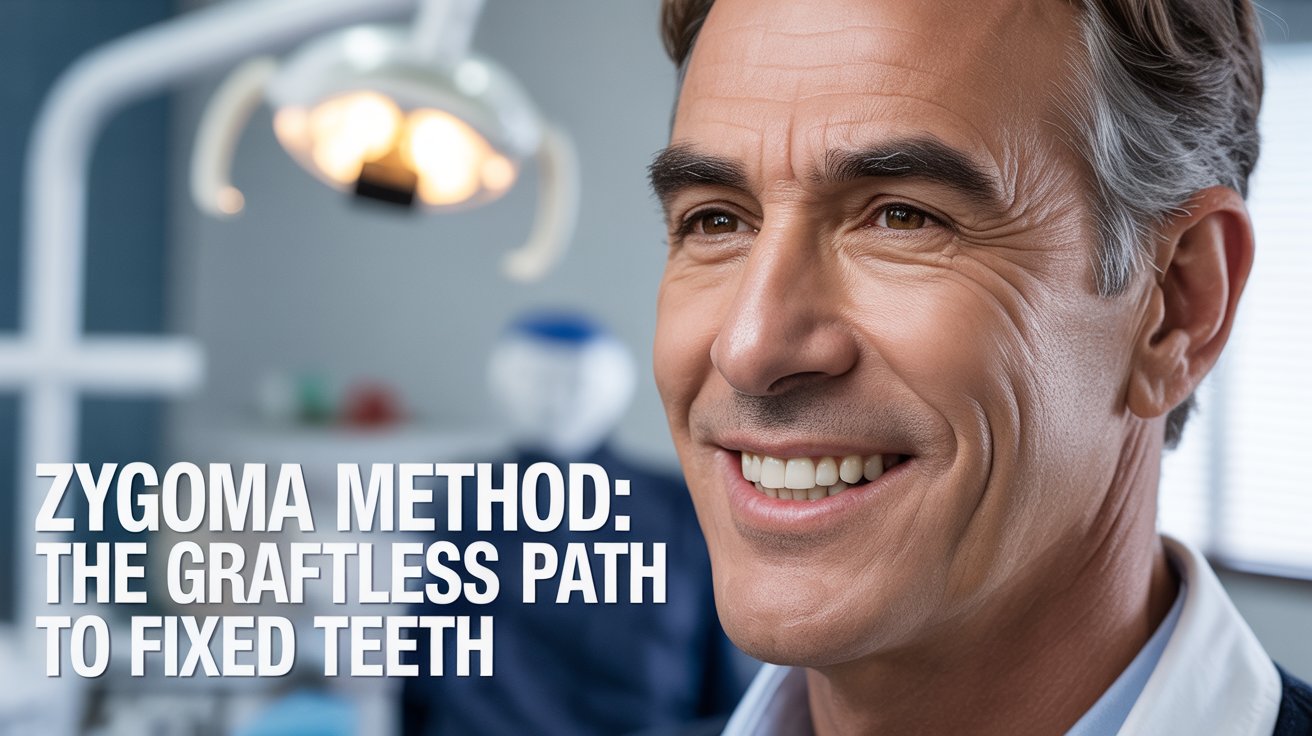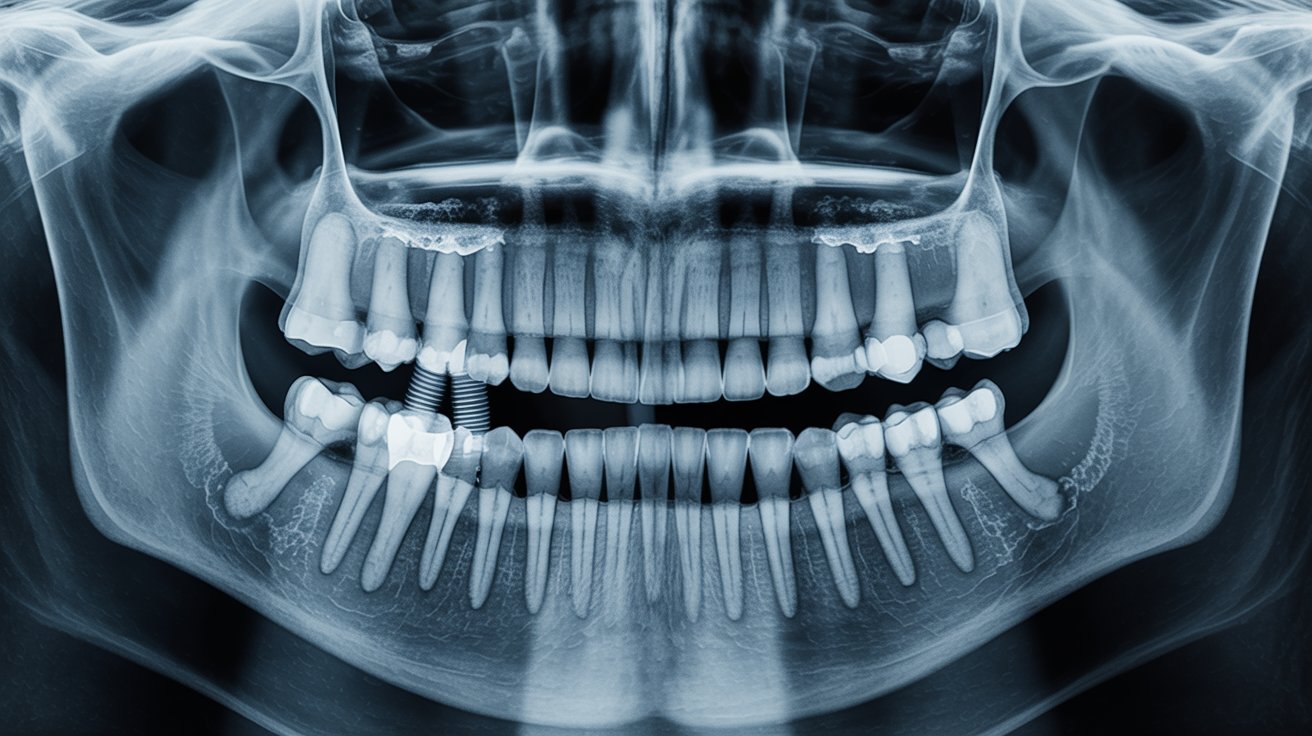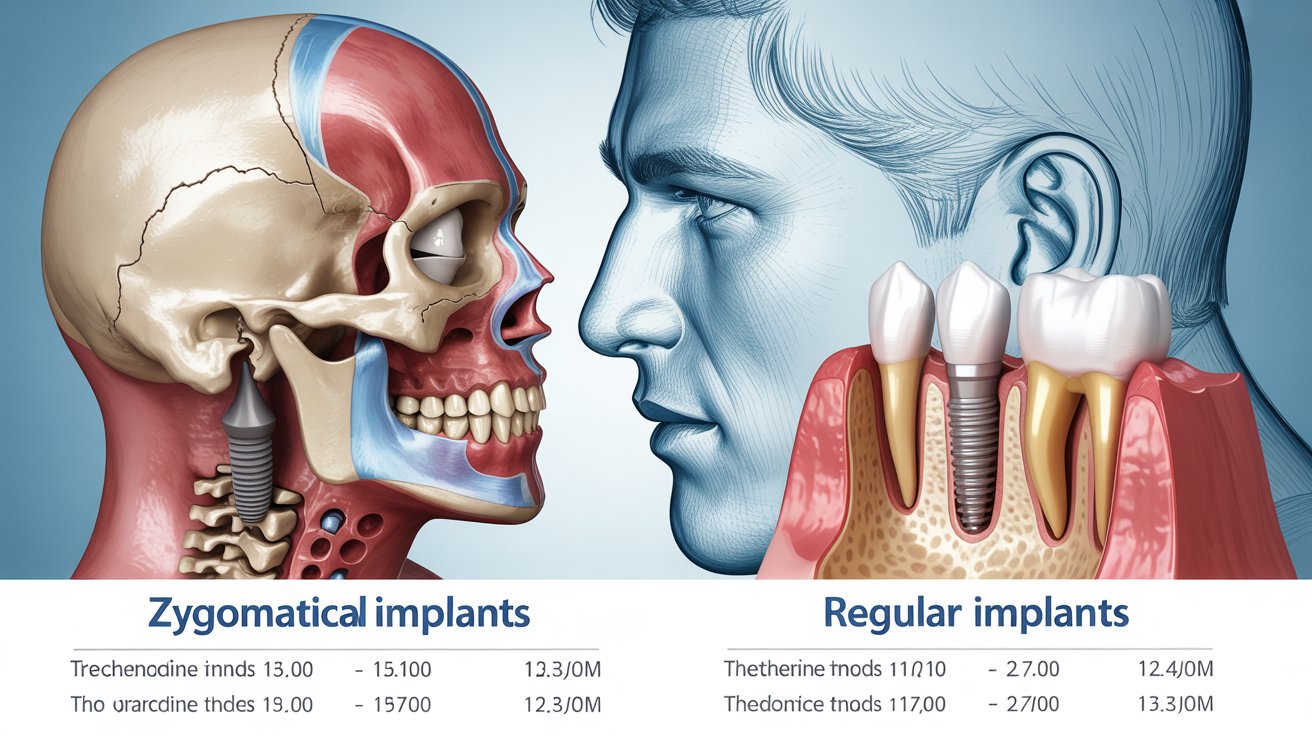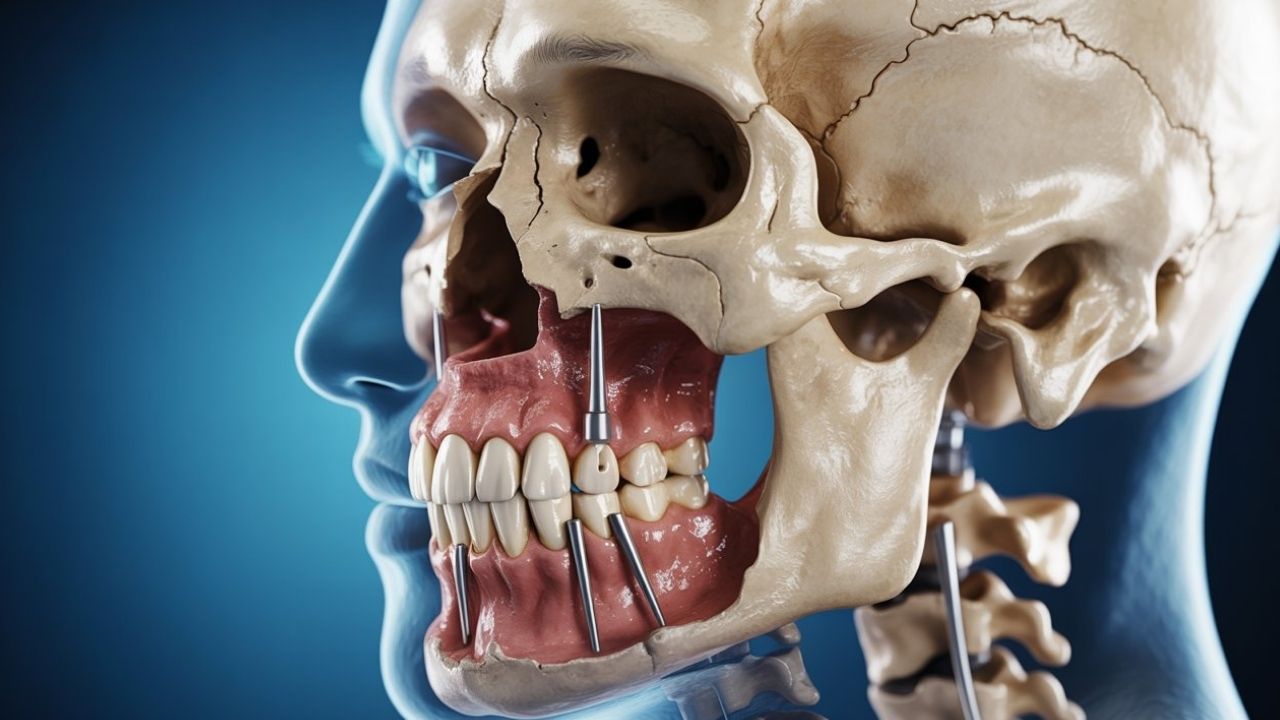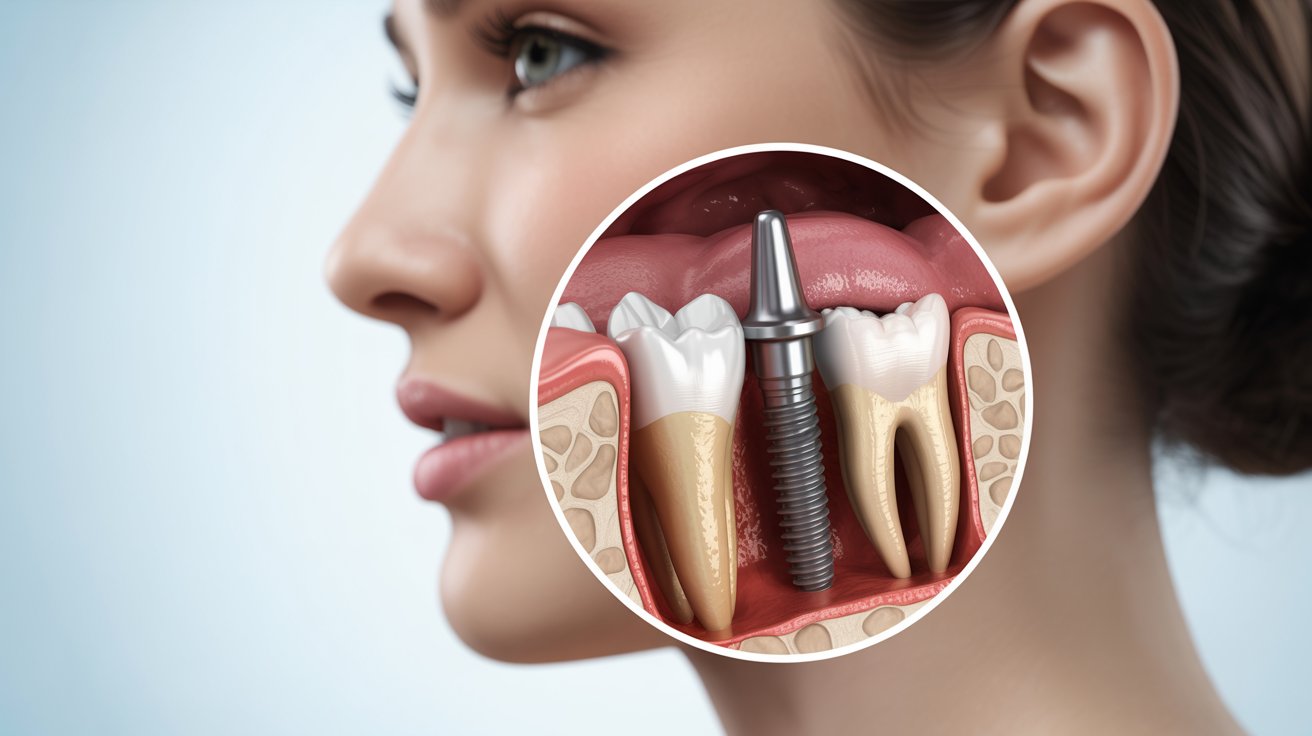The zygoma method (zygomatic implant technique) anchors long implants in the cheekbone to restore a fixed smile when the upper jaw has severe bone loss. It is a proven, graft-free alternative for patients who were told they “don’t have enough bone” for conventional implants.
What Is the Zygoma Method?
The zygoma method uses extra-long titanium implants that travel from the upper gum, past or along the sinus wall, to engage the dense zygomatic bone (cheekbone). Because the zygoma offers excellent cortical density, the implants achieve high primary stability and can often support an immediate fixed bridge (teeth in 24–48 hours).
Who is the Most Suitable Candidate for the Zygoma Method?
If you are one of these needs:
- Severe maxillary atrophy (very thin/low upper jawbone)
- Failed sinus lifts or bone grafts, or desire to avoid grafting
- Long-term denture wearers seeking a fixed full-arch solution
- Post-oncologic or traumatic maxillary defects (case-by-case)
Key Advantages of the Zygoma Method
Prof. Dr. Celal Çandırlı serves an efficient treatment porocess for your needs. Zygomatic implat method is the best way to have healthier tooth in the implantation process. Here are the key advantages of the zygomatic dental method.
Graftless, Faster Care
By bypassing weak maxillary bone, the zygoma method avoids sinus lifts and block grafts, compressing months of treatment into days.
Immediate Function
High primary stability in the cheekbone allows immediate or early loading with a fixed bridge for rapid return to chewing and speaking.
High Stability in Difficult Jaws
Dense zygomatic bone delivers superior anchorage where conventional implants routinely fail.
Prosthetic & Aesthetic Control
Digital, prosthetics-driven planning improves smile line, lip support, and hygiene access for long-term maintenance.
Zygoma Method: The Graftless Path to Fixed Teeth
Limitations & Considerations of the Zygoma Method
While the zygoma method offers a revolutionary solution for patients with severe upper jaw bone loss, it is not without certain clinical and practical considerations. Understanding these limitations helps patients make informed decisions and prepare for realistic outcomes. Below are the key factors every candidate should evaluate before treatment.
Surgical Complexity
The zygoma method involves precise implant trajectories that pass through or alongside the sinus cavity to anchor in the cheekbone. This demands a highly skilled oral and maxillofacial surgeon with experience in advanced anatomical navigation and 3D-guided implantology. Choosing an expert dramatically reduces risks and ensures predictable long-term success.
Anatomy-Dependent Suitability
Not every patient is an ideal candidate. In rare cases, inadequate zygomatic bone volume or the presence of active sinus infections may require pre-treatment management before zygomatic implant placement. A thorough CBCT evaluation is essential to determine bone density, sinus health, and the safest implant pathway.
Upfront Cost and Technology Requirements
The initial investment for the zygoma method is typically higher than conventional implants due to advanced imaging, longer implant lengths, and guided or navigation-assisted surgery. However, these technologies increase precision, minimize complications, and can shorten the overall treatment timeline — offering excellent long-term value.
Hygiene and Maintenance
Full-arch prosthetic restorations require disciplined oral hygiene and routine professional maintenance. Patients should use water flossers, interdental brushes, and antibacterial rinses to keep peri-implant tissues healthy. Regular follow-ups every 3–6 months help detect and prevent inflammation, ensuring that zygomatic implants remain stable for decades.
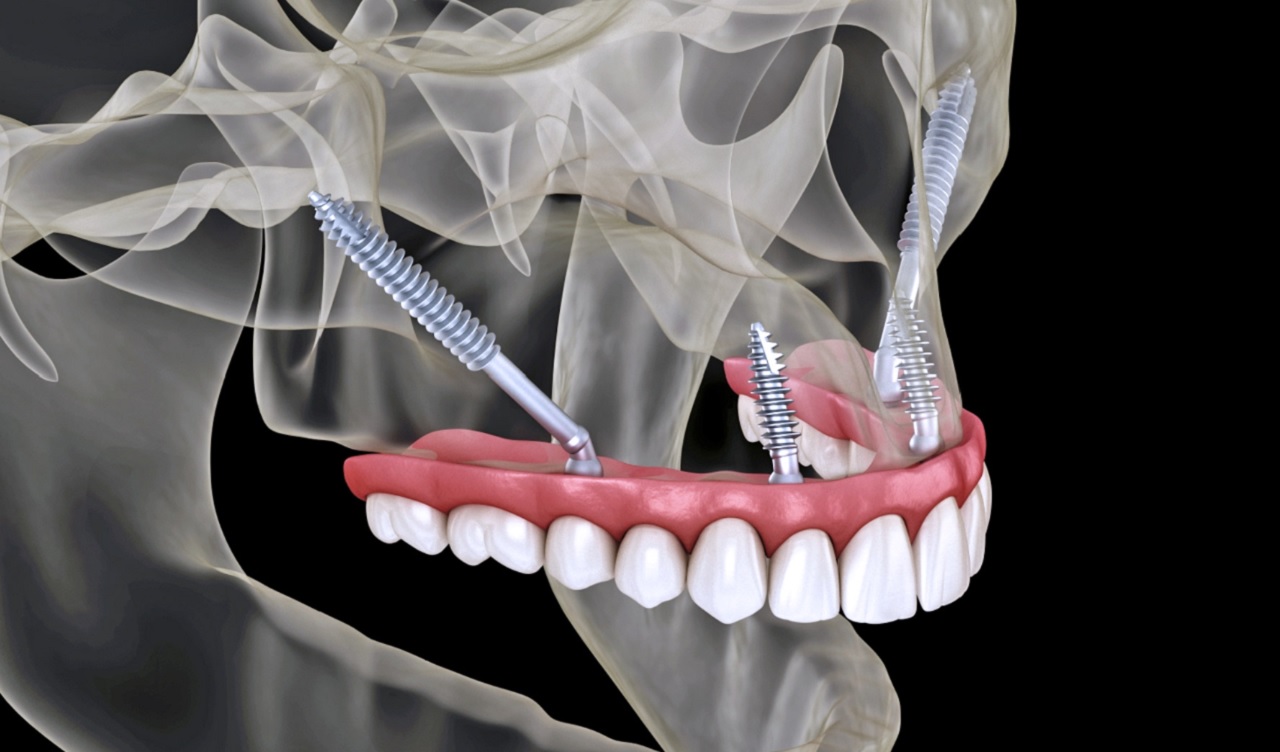
Recovery & Aftercare of the Zygoma Implant Method
During recovery with the zygoma method, patients can expect a gradual return to comfort and function. In the first week, mild swelling, sinus pressure, and bruising are common, and a soft diet is recommended to protect healing tissues. By weeks two to four, speech and chewing typically adapt to the provisional bridge as the soft tissues stabilize. Over the next three to six months, the process of osseointegration completes, allowing the final prosthesis to be fabricated and securely fitted for long-term function and aesthetics.
Maintenance Essentials
- Daily hygiene with superfloss, interdental brushes, and water-flosser
- Professional maintenance every 3–6 months
- Annual radiographic checks; CBCT if sinus symptoms arise
Potential Risks (Uncommon but Important) of the Zygoma Method
Although the zygoma method is considered a safe and predictable procedure when performed by qualified surgeons, it still carries a few uncommon but important risks. These potential complications are generally preventable with meticulous planning, proper hygiene, and an experienced surgical team. Understanding them allows patients to approach treatment with realistic expectations and confidence in their care.
- Sinusitis or mucosal irritation if hygiene or emergence design is suboptimal
- Soft-tissue inflammation around abutments without proper cleaning
- Rare sensory changes (infraorbital region) if trajectories are poorly planned
Choosing an experienced team and following a prosthetics-first plan substantially reduces these risks.
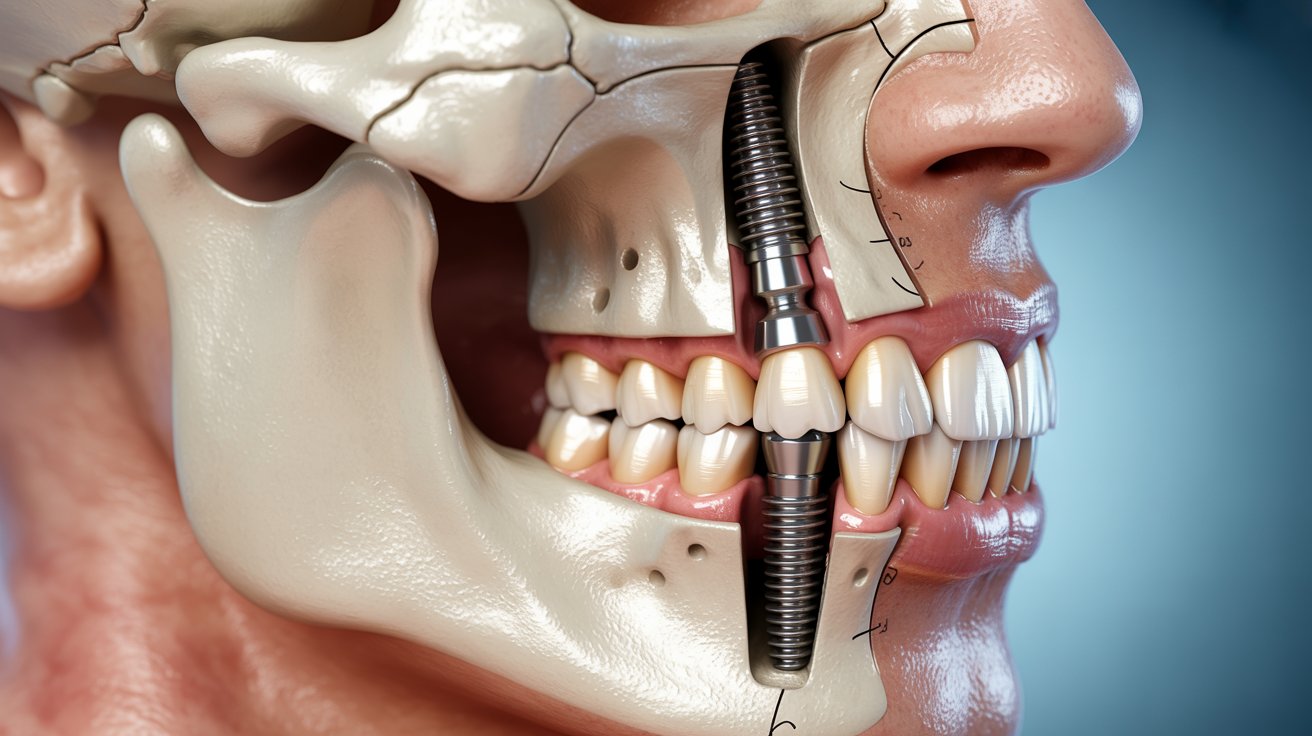
How Much Does Zygoma Method Cost?
Fees for the zygoma method reflect surgical expertise, the number/length of implants (hybrid vs. quad), digital guidance, and the prosthetic material (hybrid titanium vs. monolithic zirconia). All-inclusive packages may also cover CBCT, provisional/final prostheses, reviews, and travel assistance in some regions.
| Driver | Influence |
|---|---|
| Surgeon experience | Premium fee; fewer revisions/complications |
| Digital planning & navigation | Higher accuracy; safer sinus pathway |
| Prosthetic choice | Zirconia frameworks increase upfront cost, extend longevity |
| Follow-up & warranty | Valuable for long-term function and predictability |
Zygoma Method vs. Traditional Implants
When comparing the zygoma method to traditional dental implants, the key differences lie in bone requirements, treatment time, and clinical complexity. While conventional implants depend on sufficient jawbone volume and often require grafting, the zygoma approach anchors directly into the cheekbone, bypassing bone deficiencies entirely. This distinction allows for faster rehabilitation, fewer surgeries, and a predictable outcome even in patients with severe maxillary atrophy.
| Aspect | Zygoma Method | Traditional Implants |
|---|---|---|
| Bone requirement | Anchors in cheekbone; no grafts | Needs adequate jawbone; often grafts |
| Timeline | Immediate/early loading feasible | 6–9 months with graft healing |
| Ideal candidates | Severe maxillary atrophy | Mild–moderate bone loss |
| Complexity | High; specialist technique | Lower; widely available |

Frequently Asked Questions About the Zygoma Method
Patients exploring the zygoma method often have questions about its safety, longevity, and recovery process. Below are the most frequently asked questions that help clarify what to expect before, during, and after treatment. Understanding these details ensures realistic expectations and confidence in choosing this advanced, graftless implant solution.
Is the zygoma method safe?
Yes—when performed by trained maxillofacial surgeons using CBCT-guided planning and proper prosthetic design.
Can I get fixed teeth in a day?
In many cases, yes. Immediate provisional bridges are common due to high stability in the zygoma.
Will I feel sinus issues?
Temporary pressure or congestion can occur in week one. Persistent symptoms are uncommon and managed by your team.
How long do results last?
Implants can last decades with hygiene and regular maintenance; prosthetic upgrades may be needed over time.
